EcoPlastiC at the TUS Research Week 2024

At the Technological University of the Shannon (TUS) in Athlone Campus, Ireland, the TUS Research Week took place from 12-16 February 2024. The conference was conducted in a hybrid format, combining both in-person and virtual attendance modes.
During the week, there were 53 postgraduate submissions displayed throughout 4 research themes (Creating the future; Digitalization; Social Innovation and Sustainable Development), 14 postgraduate led sessions, 1 video and 4 posters from TUS and 1 video from our RUN-EU (Regional University Network – European University) students. In addition to talks, workshops and information sessions, several competitions took place across the week including the ‘TUS Research Image Competition’ and a competition for the ‘Most Impactful Research Publication’. The TUS Research Week featured an impressive attendance record, with a total of 2465 participants joining the event.
As part of the EcoPlastiC project and research there were 4 presentations:
- Prof. Margaret Brennan Fournet, Project Coordinator of EcoPlastiC presented an overview of the projects in her presentation titled “Leading a Collaborative Cross-Continental Research Project”.
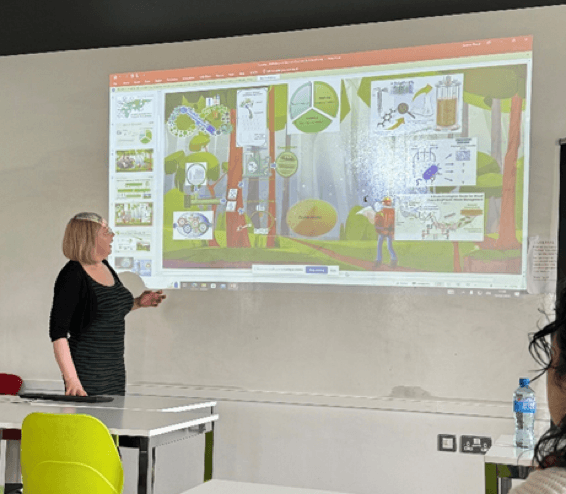
- Everton Henrique Da Silva Pereira, PhD candidate, participated with the poster “From Ancient Brew to Modern Marvel: Harnessing Bacterial Nanocellulose for a Green Future” which highlights achievements in bacterial cellulose production, downstream processes, and PET-waste upcycling through bioprocesses, showcasing the potential for sustainable circular practices.
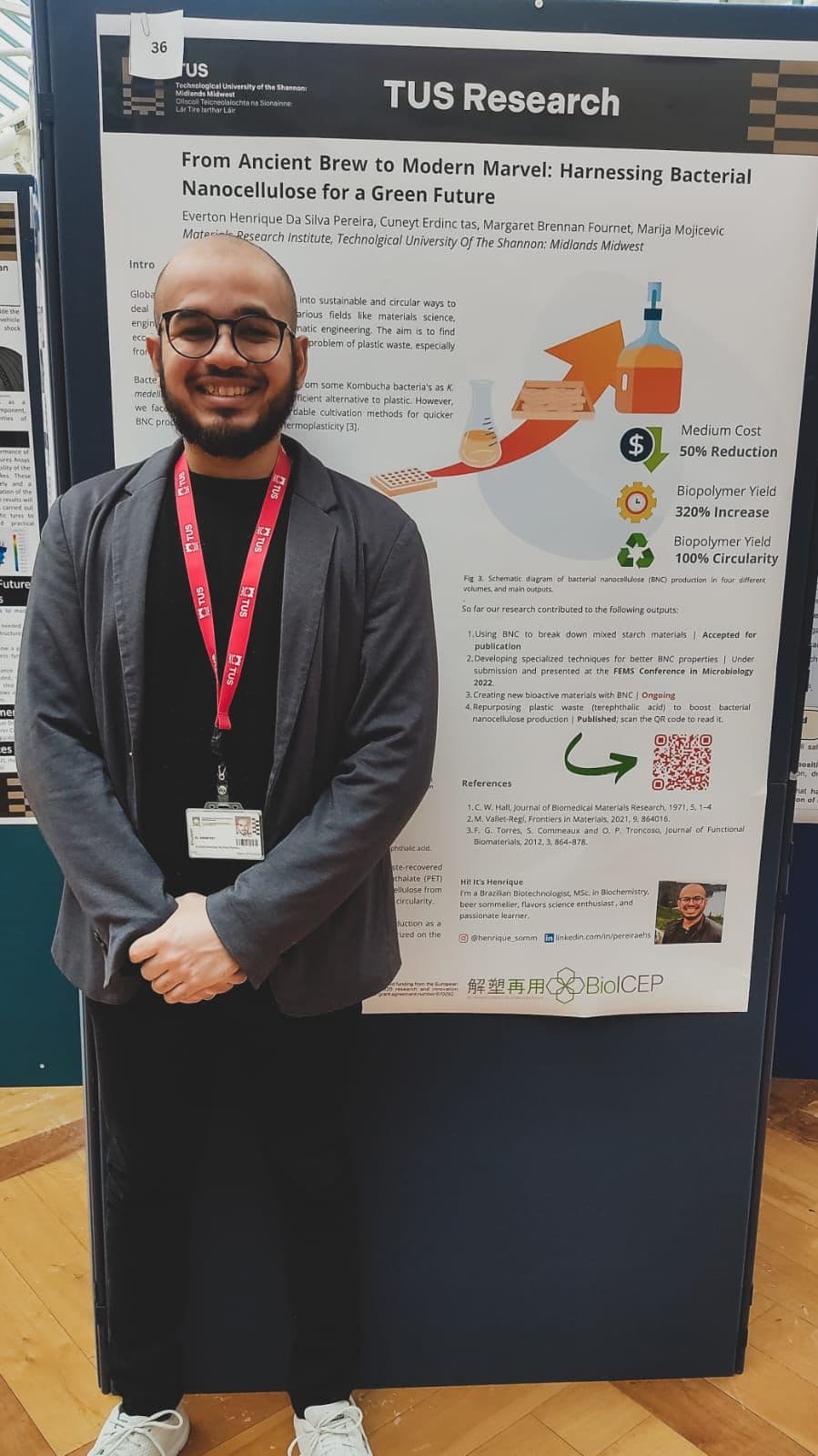
- Diana Alicia Garza Herrera, PhD candidate, participated with the poster “Promising DG19 Streptomyces spp. Strain Isolated from Plastic-polluted Sites with Upcycling Potential as Antimicrobial Producer Using PET Precursor-supplemented Productive Media” which focuses around the promising Streptomyces spp. strain DG19, sourced from plastic-polluted environments. The focal point of this investigation lies in its upcycling potential as an antimicrobial producer, employing pet precursor supplemented-media.

- Jeovan Araujo, PhD candidate, took part with the poster “End-of-Life Routes for Mixed Plastic Waste: What’s the Solution?” which presented end-of-life options for mixed plastic waste formed by petroleum- and bio-based plastics, for which a biotechnological model was proposed using enzymes to break down the mixed waste that is subsequently converted into bacterial nanocellulose, a regenerative eco-polymer.

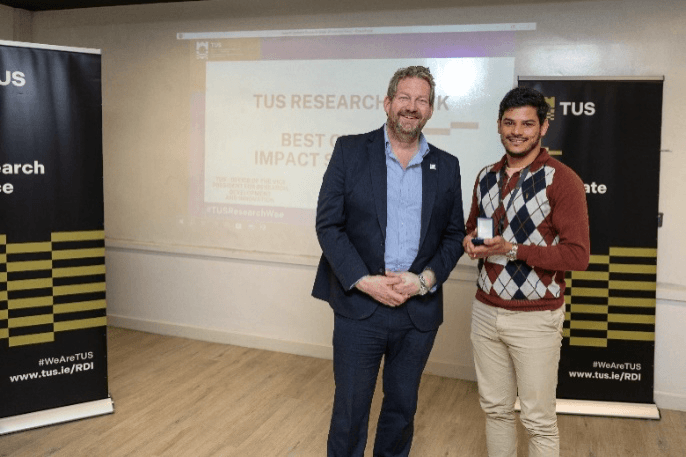
Jeovan’s poster was awarded the Best Overall Impact Submission, which was sponsored by Dr Liam Brown, the Vice President for Research, Development and Innovation at TUS. Congratulations!
Postgraduate Research Image Competition
Jeovan Araujo received another award for the Best Postgraduate Research Image, which was sponsored by the TUS Library. His image was titled “Planetary Milled Gems”.
As part of his PhD research at TUS, Jeovan works with a planetary ball mill, a powerful mechanochemical tool that has emerged to enable the development of approaches to solvent-free reactions, which not only can be simpler, but faster and cleaner than conventional routes. In his work, Jeovan is trying to degrade synthetic polymer polyester—one of the most widely used plastics in the world, especially in clothing and packaging. In one of these attempts, he used a planetary ball mill at a high rotational speed which helps to break down the polymer chains of the polyester plastic. Typically, mechanochemical degradation results in monomers or small-molecules building blocks to achieve chemical recycling of such synthetic plastics, but in this case, Jeovan also observed the formation of a metallic sludge, possibly due to the chemical corrosion of the steel balls during the grinding operation—which gave the resulting product a distinctive metallic effect covering the surface of the planetary mill spheres.
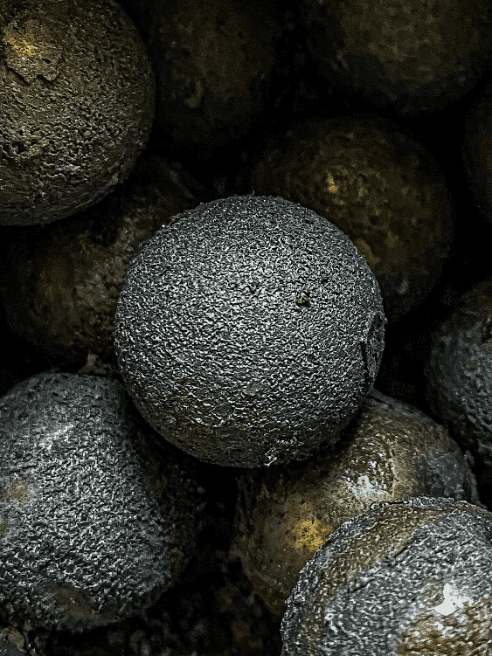
Diana Alicia Garza Herrera received an honourable mention for Postgraduate Research Image for her image titled: “Tiny heroes: bacterial biodegraders in action”.
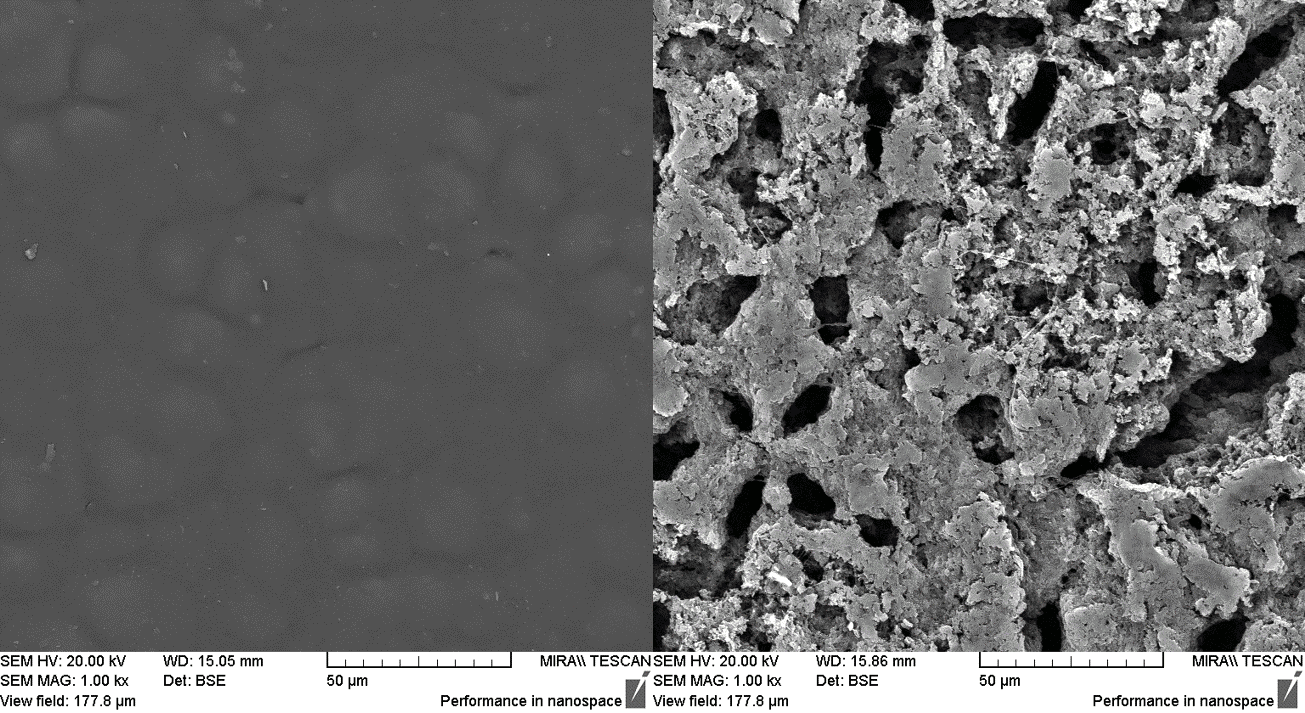
As part of her research at TUS, Diana works with bacteria isolates and their interaction with polymers. Polyhydroxybutyrate (PHB) a biopolyester alternative with diverse applications, notably in packaging, due to its inherent nature. However, its biodegradation rate may decrease under suboptimal conditions, raising concerns about potential environmental persistence. In this specific image, this scanning electron microscope (SEM) image presents a captivating dual perspective on PHB. On the left, a pristine portrayal of a PHB film without bacterial influence, establishing a baseline scenario. In stark contrast, the right segment introduces a film with the presence of Streptomyces spp. DG19, a bacterium isolated from a soil sample near an Irish forest and river stream known for pollution incidents. Both under the same incubation conditions for 3 weeks. The juxtaposition highlights the microbial intervention of Streptomyces spp. DG19 in PHB degradation, underscoring its potential role in environmental remediation. Originating from a region susceptible to pollution, Streptomyces spp. DG19 signifies a microbial agent capable of metabolizing PHB in a complex ecosystem. This image serves as a visual narrative of the dynamic interplay between bacterial degraders and an environmentally prevalent polymer, offering insights into potential applications for sustainable environmental management.